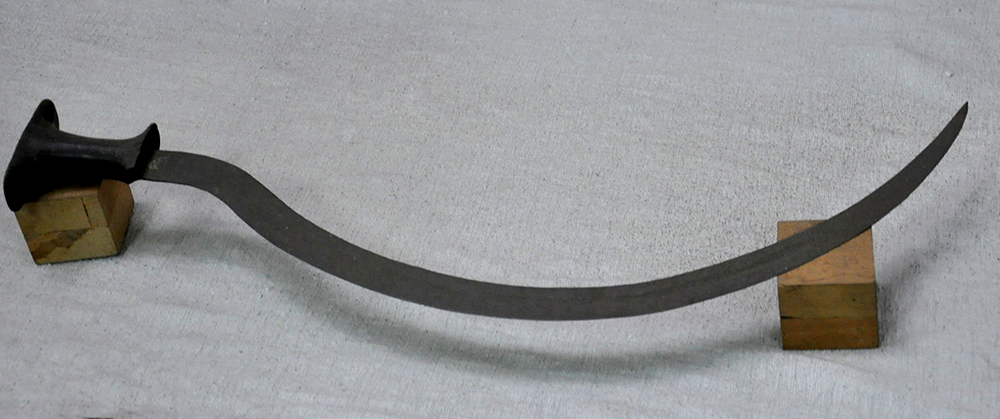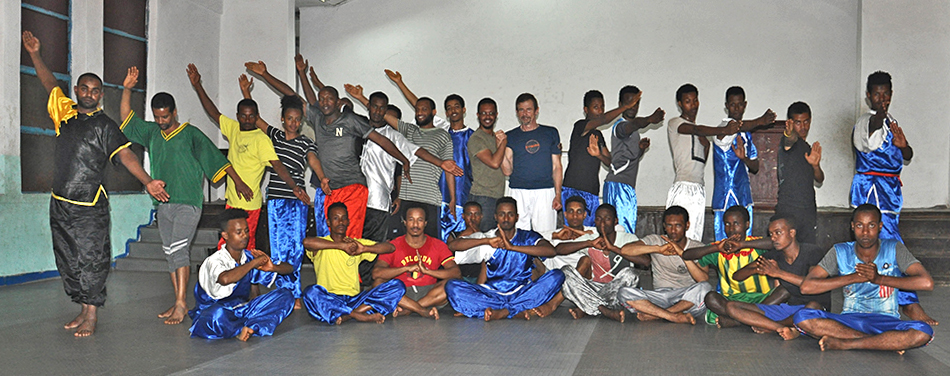 HOW SENEGALESE WRESTLING BECAME A MODERN MARTIAL ARTS SENSATION
HOW SENEGALESE WRESTLING BECAME A MODERN MARTIAL ARTS SENSATION
BY CIKU KIMERIA • APR 16 2018
Why You Should Care
Because this wrestling-boxing combo is bigger than soccer in Senegal.

Senegal
14.497401° N, -14.452362° W
15,411,614 Population
Multiple, including French & Wolof Spoken Languages
$2,678 GDP Per Capita
Dakar Capital City
The crowd is buzzing as the unforgiving Dakar sun beats down and the stadium fills past capacity. The air is thick with tension — one fears to step on anyone’s toes. The drums pound louder in anticipation of the historic match that is about to begin. Two loincloth-clad wrestlers prepare in an expansive ring, their feet deep in the sand. Each grappler is joined by a marabout or two, spiritual guides who lead their men through rituals that, while steeped in traditional culture, also borrow heavily from the mystical Sufi Islamism practiced by most Senegalese.
In the ring is Fodé Doussouba, the 6-foot-2-inch, 330-pound star of traditional Senegalese wrestling sans frappe (without hitting or punching), who has enjoyed an undefeated, 11-year reign. He walks through a wooden loop four times to ward off negative spells.
His opponent is the heavy favorite, Bory Patar, the 6-foot-5-inch, 265-pound champion of wrestling avec frappe (with hitting or punching), the modern, commercial version of the sport that combines elements of wrestling and bare-knuckle boxing. Patar, who is wearing leather charms and amulets, douses himself in an oily liquid handed to him by his marabout — a potion to increase his strength, make him invincible and assure victory.
WRESTLING COMPETITIONS ALSO WERE USED TO PAY HOMAGE TO RESPECTED LEADERS, CELEBRATE INITIATION CEREMONIES AND SHOW OFF MASCULINITY TO POTENTIAL BRIDES.
In the stadium’s seat of honor sits a regal man in a grand boubou — Bassirou Diagne Marème Diop. In a few decades he’ll become Le Grand Serigne de Dakar, the leader of the Lebou people, fishermen who are the original inhabitants of the region. For now, in 1961, he’s a rogue wrestling promoter who has rigged the match between old and new, giving the fighters different contracts that require each to compete in his own style, while filling the stadium with fans hungry to see what type of fight it turns out to be.
4, 3, 2, 1 — wrestle!
Patar lashes out. “He punched me!” yells Doussouba, holding his head in shock.
Diop rushes into the ring and loudly berates Patar. “Why did you hit him? You know this match is meant to be a traditional wrestling match — no punching!” As he walks away, though, he whispers to Patar: “Next time, hit him harder.”
4, 3, 2, 1 — wrestle!
Bam!
This time, realizing he’s been tricked, Doussouba reaches for a big stick and uses it to beat Patar. The event descends into chaos as the fans start fighting in the stands. The match is stopped, but a winner can be declared: the modern style. From that point on, the dominant wrestling in Senegal is avec frappe.
Not that it mattered to Diop, who had covered his bases. “The money had been taken home to the promoter’s wife before the match even began,” says Serigne Mour Diop, a Senegalese wrestling historian, journalist and author of La Lutte Senegalaise. “They knew the drama that would ensue.”
La lutte Senegalaise, or laamb ji as it’s known in the Senegalese language of Wolof, has existed since the 14th century. It was a form of entertainment that usually occurred after the harvest when villages would compete against each other. The wrestling competitions also were used to pay homage to respected leaders, celebrate initiation ceremonies and show off masculinity to potential brides.

Balla Gaye 2 (left) tangles with Eumeu Sene during a Senegalese traditional wrestling match.
SOURCE LI JING/XINHUA/ALAMY
In the early years of the 20th century, French colonial leaders introduced prize money, which gradually changed the sport from a community event into a commercial one. La lutte declined during World War I, when more than 200,000 Senegalese soldiers served France — 30,000 of them perished in the European conflict.
Despite the wartime setback, Senegalese wrestling recovered, its popularity and mysticism intact. A major turning point was in 1924 when Maurice Jacquin, a French film producer and avid boxer, opened a cinema in Dakar and used its grounds to train boxers. Several wrestlers were attracted to the sport, and Jacquin came up with the idea of combining the two martial arts into today’s dominant version of la lutte.
While fame was always there for great wrestlers, fortune only started in the 1970s when the sport was formalized and coordinated under a governing body. Since then, la lutte has become more famous than soccer in Senegal — and it attracts even larger sponsors. The big stars can make as much as $200,000 per match and fight in two to three matches per year, say promoters. And that’s in a country where the annual income per capita is $1,093, according to the World Bank.
Today, in the same way a young boy in a Brazilian favela dreams of becoming the next Ronaldo, in Senegal a young boy dreams of being Falaye Baldé, who grabbed his opponents and demanded of the crowd, “Tell me where to toss him!” Or Mame Gorgui Ndiaye, who after every match, spoke poetically of all the wrestlers he had defeated — driving his fans into a frenzy. Or Doudou Baka Sarr, famous for bringing his own musicians to matches and, after each victory, parading in front of the crowd in a majestic robe decorated with mirrors.
The young Senegalese boy dreams of going down in history, immortalized in songs and stories with the great wrestlers who have gone before him.





 Reply With Quote
Reply With Quote














